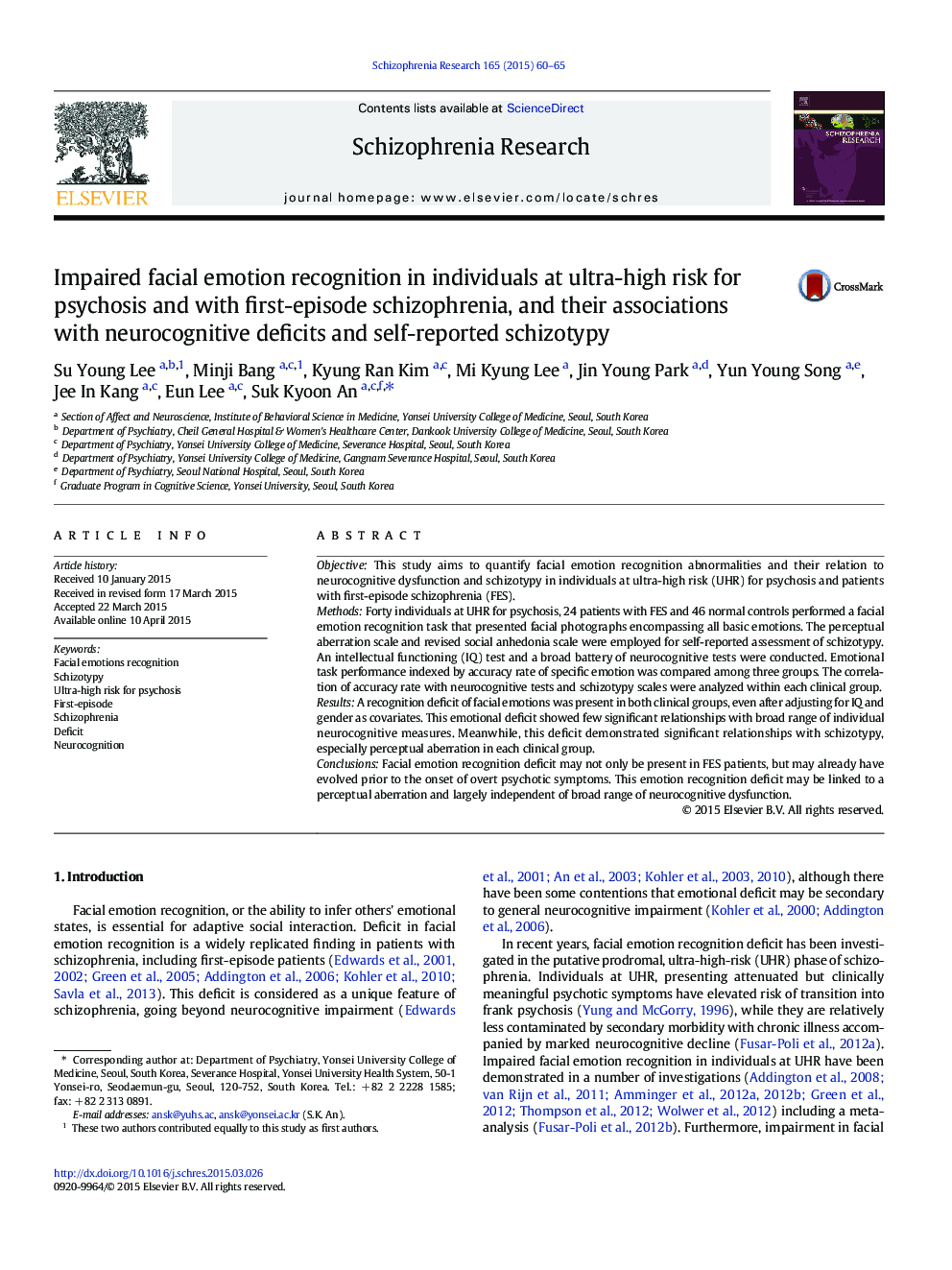| Article ID | Journal | Published Year | Pages | File Type |
|---|---|---|---|---|
| 341072 | Schizophrenia Research | 2015 | 6 Pages |
ObjectiveThis study aims to quantify facial emotion recognition abnormalities and their relation to neurocognitive dysfunction and schizotypy in individuals at ultra-high risk (UHR) for psychosis and patients with first-episode schizophrenia (FES).MethodsForty individuals at UHR for psychosis, 24 patients with FES and 46 normal controls performed a facial emotion recognition task that presented facial photographs encompassing all basic emotions. The perceptual aberration scale and revised social anhedonia scale were employed for self-reported assessment of schizotypy. An intellectual functioning (IQ) test and a broad battery of neurocognitive tests were conducted. Emotional task performance indexed by accuracy rate of specific emotion was compared among three groups. The correlation of accuracy rate with neurocognitive tests and schizotypy scales were analyzed within each clinical group.ResultsA recognition deficit of facial emotions was present in both clinical groups, even after adjusting for IQ and gender as covariates. This emotional deficit showed few significant relationships with broad range of individual neurocognitive measures. Meanwhile, this deficit demonstrated significant relationships with schizotypy, especially perceptual aberration in each clinical group.ConclusionsFacial emotion recognition deficit may not only be present in FES patients, but may already have evolved prior to the onset of overt psychotic symptoms. This emotion recognition deficit may be linked to a perceptual aberration and largely independent of broad range of neurocognitive dysfunction.
